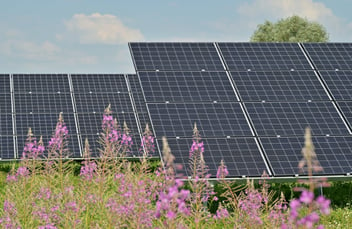All about export limiting
You’ve likely heard the term ‘export limit’ from one of our staff, or during your research before installing solar. The term refers to the amount of power your system is allowed to let flow back to the grid, as determined by your power company. It’s a fairly new concept that has only been in use for the last few years since solar systems have been getting larger.
It starts with understanding that the electricity grid was only designed to flow in one direction; from the power station to your home. Although it’s physically possible for the power to flow out of your home and back into the surrounding neighbourhood, the grid doesn’t handle this too well and can become unstable, which is why there are limitations on how much you can allow back into the grid.
Remember, we’re talking about ‘power’ which is the energy flow at a given moment. Export limitation has nothing to do with daily amount of kWh or anything like that.
Some figures:
- Solar systems are usually rated in kW [kiloWatts], of the total rating of the solar panels
- The power that the grid sees actually comes out of the inverter and this is where the export limit happens.
- Inverters that have been installed over time range mostly from 1kW to 10kW
- The most common export limit is 5kW
How does it work?
Export limitation works by installing a sensor into your main switchboard. This sensor measures the power that is flowing to the grid, and when it hits the limit it signals the inverter to ramp down its solar production to match the limit.
Note that we’re talking here about ‘export’ only. All solar systems are wired up so that the solar power:
- Supplies your home and your appliances first, then
- Overflows back to the grid with the excess. [This is all automatic, there are no switches involved].
What are the implications?
- Mainly, the feature allows for larger solar systems to be installed, over and above the limits imposed by power companies
- Normally, an additional device must be installed into your switchboard, and this costs up to several $100.
- During periods of i) high solar production and ii) low house power consumption [when the system is likely to produce export] your solar system will ramp down its performance.
- This effect can be mitigated by i) choosing a solar system size carefully ii) maximizing your power consumption during solar peak periods iii) installing a battery to capture the otherwise wasted energy.
Things to know.
- The reason that the rather arbitrary 6.6kW system size exists is to do with export limiting.
- Most regions of Australia have an export limit of 5kW, meaning that the easiest installation will use a 5kW inverter [no export limiting required]
- There’s another regulation to do with maximum solar sizing that can installed onto a 5kW inverter, and this is to do with the STC funding. To claim the STC funding, solar size must be no more than 1/3 more than the inverter, IE a 6.6kW on a 5kW inverter.
- The range of GE solar inverters contains in-built export limit function. All you need is a relatively cheap clamp and wire installed, which we can do for you. This serves to remove the high additional cost above of the separate meter, which acts as a disincentive. Why pay more to reduce the output of your solar?
- Some solar owners have installed export limiting without being aware of what it is. With the implication that the solar sometimes works worse than expected, and not a clear way of understanding why. If you have concerns about your solar system performance, please call us on 1800 989 909
.png?width=1514&height=370&name=SkyGreen_Logo%20(2).png)


